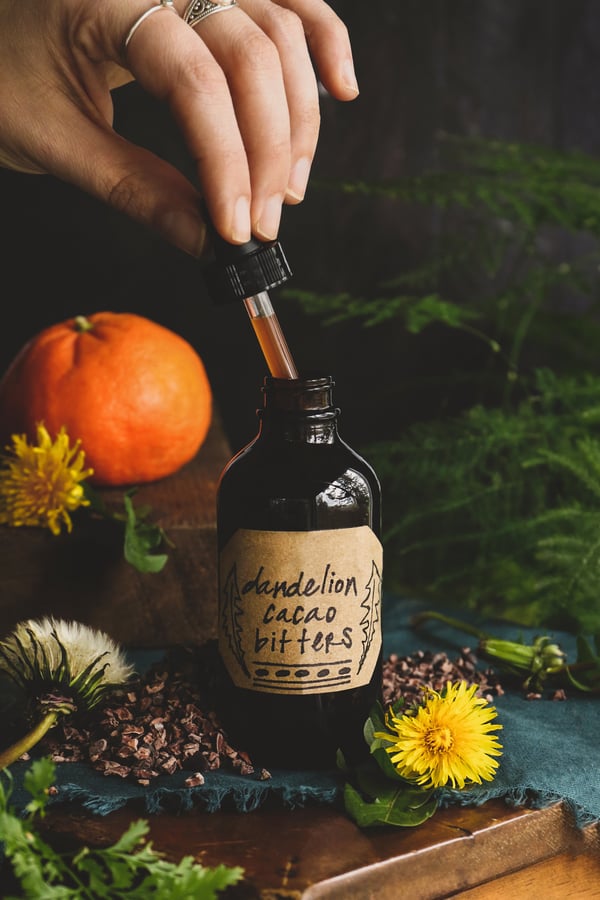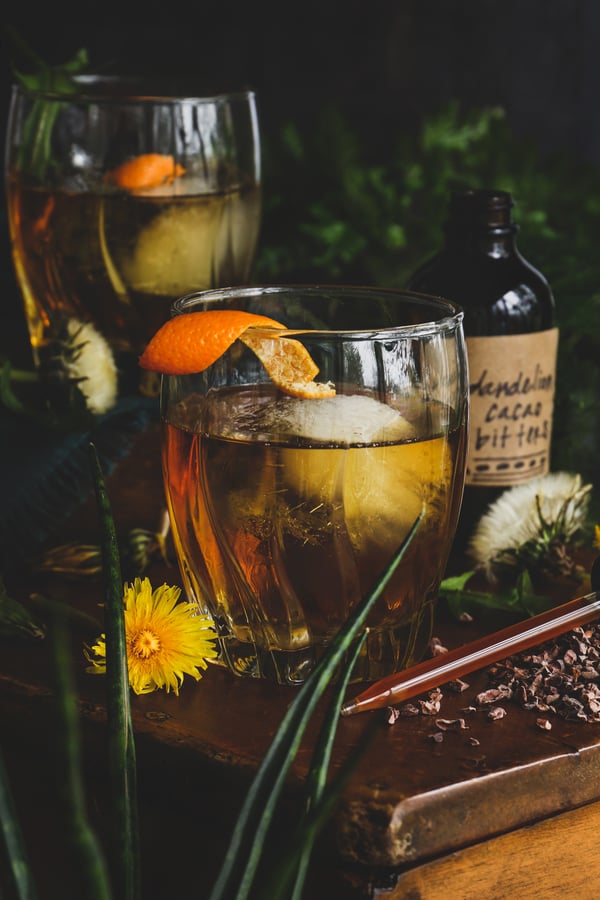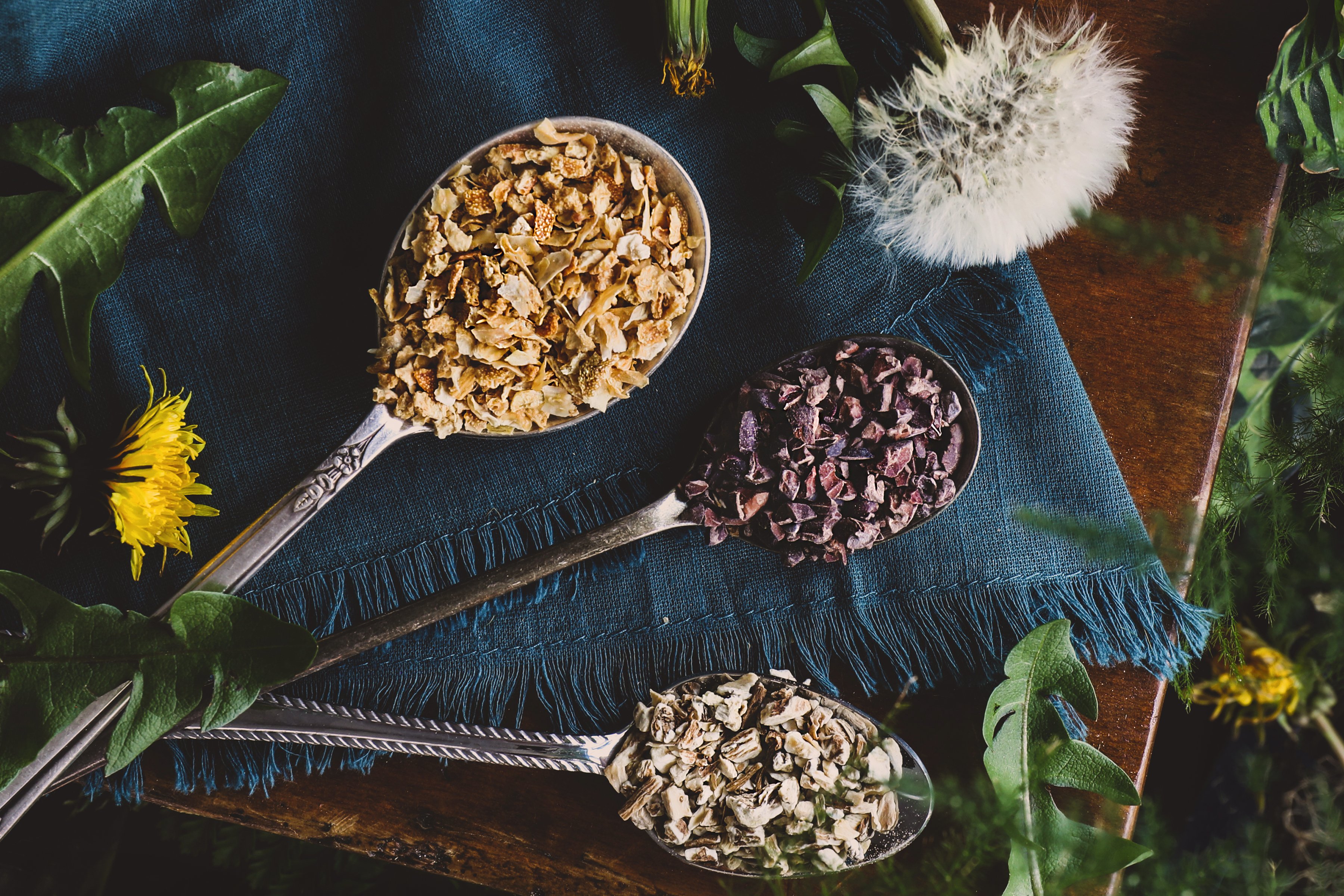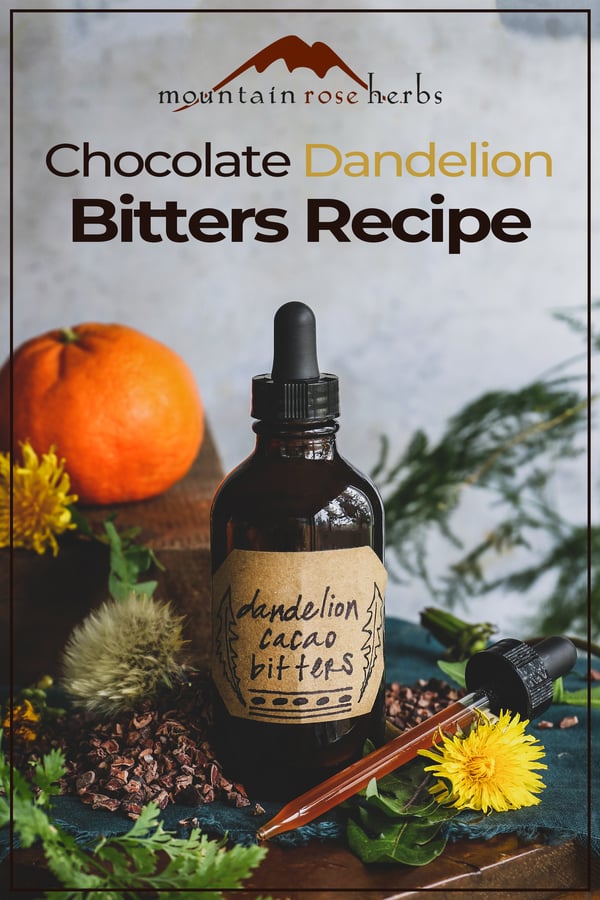Jump to Recipe!

Thousands of years ago, humans discovered the wellness-supporting qualities of bitter herbs. Presumably we started out eating them, but soon enough we were refining them into tonics, digestive aids, and extracts. In folklore, it was Mithridates, king of Pontus, who formulated the first bitters while trying to make an antidote for poisons and venoms. I suppose if I’d spent years trying to make a universal poison antidote and ended up with a really excellent digestive aid, I might be disappointed. But looking at it now, that antidote still doesn’t exist and bitters have come to the aid of millions of people throughout time. So, chin up Mithridates, you did good.
Okay, confession time: when I think of “bitters” (the liquid form in a dropper bottle, as opposed to the arugula in my salads), I imagine a beautiful cocktail, because gut-health-supporting qualities aside, a splash of really good bitters can take a cocktail or mocktail from just okay to off-the-charts. And a bitter involving roasted cacao shells or nibs? That will always catch my attention, which brings me to this recipe for dandelion and cacao bitters…
This bitters recipe has been floating around Mountain Rose Herbs for a number of years. The beauty of it is you can easily adapt it to match your palate and your goals. As a digestive aid, we enjoy dandelion-orange bitters or dandelion with raw cacao, and we also like to bring all of these wellness components together into dandelion-cacao-orange bitters. If you want to go crazy and add orange to it, that’s good too! Also, you can always change the proportions of the herbs; if you want more bitter, add more dandelion, or tone it down and add more cacao.
Dandelion & Raw Cacao Bitters with Orange Option
Ingredients
- 2 Tbsp. dried organic dandelion root or 10 oz. fresh dandelion root
- 2 Tbsp. crushed organic raw cacao*
- 2 Tbsp. dried organic orange peel or the peel of 1 organic orange (optional)
- Vodka (40% or higher proof)
*If using whole cacao beans crush them in a food processor, blender, or by hand with a mortar and pestle. Or take a hammer to them; that works too.
Roasted “Chocolaty” Bitters with Orange Option
Ingredients
- 2 Tbsp. dried organic dandelion root or 10 oz. fresh dandelion root
- 2 Tbsp. organic roasted cacao shells or roasted cacao nibs
- 2 Tbsp. dried organic orange peel or the peel of 1 organic orange (optional)
- Vodka (40% or higher proof)
Directions
There are two ways to make these bitters: the folk method or the ratio method. You are aiming for a 1:3 ratio, but one method involves eye-balling it, and the other uses a traditional weight-volume ratio. Use whichever method makes sense for your personal style.
Folk Method Directions
- Fill a sterile 1-cup jar 1/3 of the way full with dandelion, cacao, and optional orange peel.
- Fill the remainder of the jar with vodka.
- Seal with a tight-fitting lid and shake well to combine.
- Put jar in a cool dark place and shake daily for two weeks.
- Strain through cheesecloth.
- Store in a glass dropper bottle in a cool cupboard for convenience.
1:3 Ratio Method Directions
- Weigh the dandelion root, cacao, and optional orange peel. Note this weight.
- Put the roots, shells, and peels into a small sterile jar (1 to 1 1/2 cups).
- Multiply the weight you noted above by three. Measure out that amount of vodka by volume and pour that amount into the jar. (e.g., if the herbs weighed 2 oz., you will measure out 3/4 cup (6 oz.) of vodka.)
- Seal with a tight-fitting lid and shake well to combine.
- Put jar in a cool dark place and shake daily for two weeks.
- Strain through cheesecloth.
- Store in a glass dropper bottle in a cool cupboard for convenience.
Pro Tips
- You can let the bitters mixture sit for half as long if you want a less potent or bitter end result. Taste at one week to determine if you want to strain or let it sit another week.
- For long-term storage after straining, remove the rubber dropper lid from the storage bottle and seal with a different lid so the alcohol doesn’t degrade the rubber.
Want to Learn More About Bitters?
Read What are Digestive Bitters & How Do They Work
You may also enjoy:
How to Make a Warming Herbal Cocktail with Tinctures
Understanding Herbal Actions and How They Support the Microbiome
Best Herbs for Digestion + 3 Easy Recipes
*These statements have not been evaluated by the Food and Drug Administration. These products are not intended to diagnose, treat, cure, or prevent any disease. We recommend that you consult with a qualified healthcare practitioner before using herbal products, particularly if you are pregnant, nursing, or on any medications. For educational purposes only.













